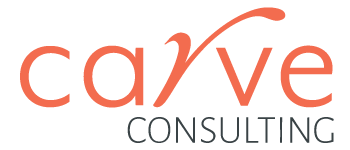Difficult conversations are a fact of life for everybody. They show up in our professional roles, personal relationships and out in our community. But some of the most difficult conversations can also be some of the most important.
If you are managing a team or an organisation and you aren’t actively managing the people issues, you are almost destined to fall short on the other measures of success.
Types of Conversations
Difficult conversations come in many shapes and forms, but they can be grouped into two main types depending on the goal of the conversation – dialogue and discussion.
- Dialogue is a reflective learning process in which two or more people seek to understand each other’s viewpoints and deeply held assumptions. It is a conversation in which talking and listening by all parties creates a flow of meaning. Out of dialogue emerges a new and shared understanding. Dialogue is a tool for collective exploration of meaning – not a search for the right answer or the best solution.
- Discussion is a conversation in which two or more people intend to come to some form of closure – either by making a decision, reaching agreement, or identifying priorities. Discussion involves convergent thinking focused on tasks. While two or more people build deeper meaning along the way, the real purpose is to come to a meeting of minds and reach some agreement.1
Based on Peter Senge et al., The Fifth Discipline Fieldbook: Strategies and Tools for Building a Learning Organization (New York: Doubleday/Currency,1994).
8 practical things to help the shift to courageous conversations
People that feel the fear of a difficult conversation, but do it anyway, have learnt that they can use courage to shift from a difficult conversation to a courageous conversion. Here are 8 practical ways that you can make that shift.
1. Learn how to handle fear and step into courage
Speaking the truth doesn’t mean doing it without fear. The people that have difficult conversations do so not because they find them easy, but because the conversation needs to happen.
Fear can have a concrete power that stops you from doing and saying things that are important. Being quiet, or not rocking the boat, may help you feel comfortable in the short run, but in the long run speaking truths that may be hard to say or hear, are necessary.
2. Nip things in the bud
Regular communication can often help contain a small issue and stop it becoming something larger and more difficult to discuss. For example, regular discussions about performance with staff are preferable to keeping things until an annual performance review that may have a range of difficult feedback.
3. Have a clear message and know your goal
Take the time to prepare for the conversation, but don’t stick to a prepared script when you are talking. You want to focus on talking with the person and not talking at them. During your planning for the conversation remember that the most impactful courageous conversation is straightforward and simple. Keep your message clear, focused on the behaviour and always circle back to the primary goal of the conversation.
4. Set the tone of the conversation from the beginning
Don’t start the conversation with small talk (eg. how are you? or how’s you day been?). These types of conversations openers can derail the reason for the conversation and send things down a rabbit hole you weren’t expecting. Be warm, considerate and open, but keep to your message and goal.
5. Consider the time and place
A courageous conversation needs the time and the place for both you and the other person to be present, not distracted, and have the time to go into as much detail as is required.
Make sure if you are having a difficult conversation you don’t schedule other appointments or activities that require the conversation to “finish on time”.
Definitely don’t be like a company that I used to work with that had the difficult conversation about redundancy late on a Friday afternoon. The company management thought that would give the employee the chance to not have to deal with any work after the news, but it also meant that the employee couldn’t access additional support of their colleagues after receiving bad news.
6. Share thoughtful and honest truths
When speaking a truth, Luvvie Ajayi shares in her TEDtalk 3 questions when preparing to share an uncomfortable truth.
- Did you mean it?
- Can you defend it?
- Did you say it with love?
In a workplace love may seem like a strange word, so another consideration could be “did you say it with compassion?”
7. Communicate in a way that elevates not denigrates
One of the ways that a courageous conversation differs to just a difficult conversation is the way in which the message is delivered. If you are delivering difficult feedback be specific and factual about the behaviour and provide examples, remain calm and avoid an accusatory approach. For example, “We are talking today because [the behaviour] is an issue that we need to address…”. Remember the old saying of play the ball and not the person.
8. Listen
Once you have shared your message it’s time for you listen to the other person. Don’t just listen to what’s being said but also what’s not being said. Give them time to share their thoughts, and feelings, about the focus of the conversation. They may not be able to clearly articulate their thoughts in the moment, so give them time to process things and arrange another time to discuss things further if required.
Final thoughts
Courageous conversations are an important part of every effective leaders toolkit. They will also help you build a culture of trust in your team or organisation.
Remember, courageous conversations are a learned skill – if you aren’t confident with them start small and practice. If you want to develop your skills find a mentor whose skill with courageous conversations you admire, or a colleague that also wants to develop this skill.

